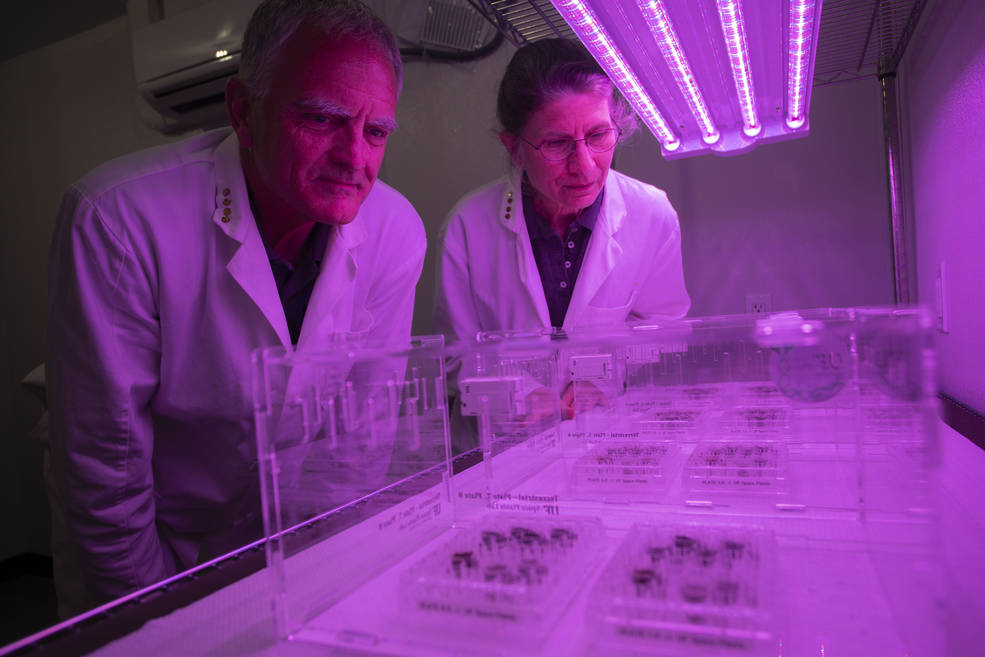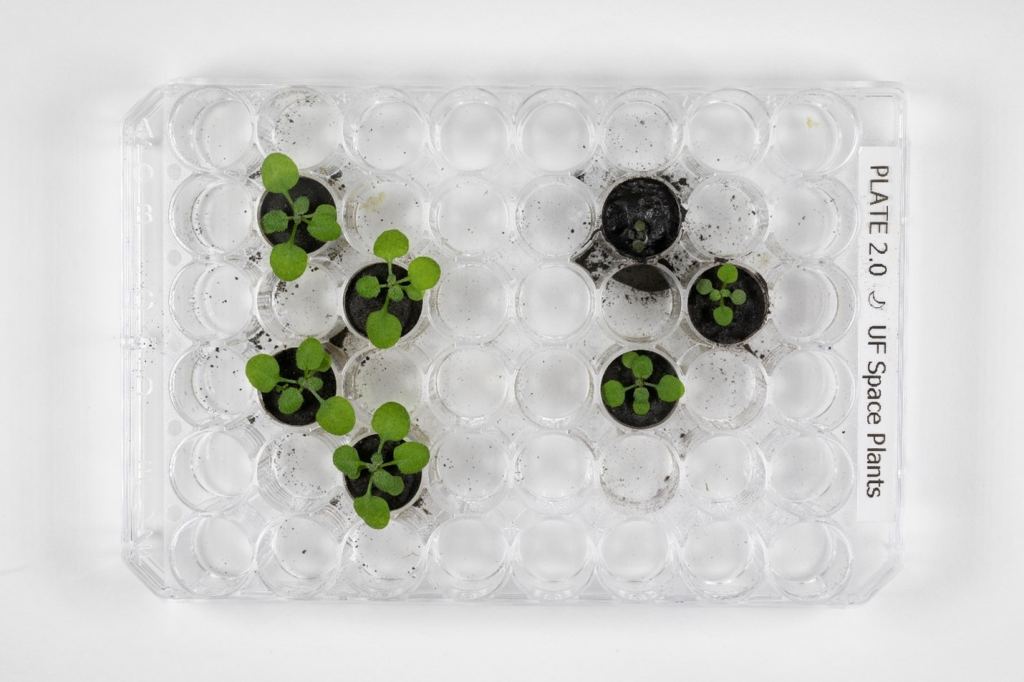NASA is sending astronauts back to the Moon by the end of this decade, and hope to send humans to Mars sometime in the 2030s. Growing food in space using in-situ resources is vital if astronauts are to survive on both the Moon and Mars for the long-term. Growing plants in space using Earth soil is nothing new, as this research is currently ongoing onboard the International Space Station (ISS). But recent research carried out on Earth has taken crucial steps in being able to grow food in space using extraterrestrial material that we took from the Moon over 50 years ago.
In a recent study published in Communications Biology, researchers have made a remarkable first step in helping future astronauts on the Moon grow their own food using lunar regolith instead of Earth soil. This is an extraordinary discovery as this could help future astronauts on the Moon and Mars grow their own food using in-situ resources as opposed to relying on resupplies from Earth to help them survive. What makes this research even more amazing is it was accomplished using lunar regolith that was returned from the Moon over 50 years ago by samples from Apollo 11, 12, and 17.

“This research is critical to NASA’s long-term human exploration goals as we’ll need to use resources found on the Moon and Mars to develop food sources for future astronauts living and operating in deep space,” said NASA Administrator Bill Nelson. “This fundamental plant growth research is also a key example of how NASA is working to unlock agricultural innovations that could help us understand how plants might overcome stressful conditions in food-scarce areas here on Earth.”
Earth’s soil is rich in vital nutrients ideal for growing plants, to include minerals (45%), water (25%), air (25%), and organic matter (5%). For Lunar regolith, 99% of the mass consists of water (41-45%), Silicon (Si), Aluminum (Al), Calcium (Ca), Iron (Fe), Magnesium (Mg), and Titanium (Ti), and nearly all of the remaining 1% consists of Manganese (Mn), Sodium, (Na), Potassium (K), and Phosphorous (P).
“Here we are, 50 years later, completing experiments that were started back in the Apollo labs,” said Robert Ferl, a professor in the Horticultural Sciences department at the University of Florida, Gainesville, and a co-author on the study. “We first asked the question of whether plants can grow in regolith. And second, how might that one day help humans have an extended stay on the Moon.”
For the study, the team grew the well-studied Arabidopsis thaliana, which is native to Eurasia and Africa, and is a relative of mustard greens and other cruciferous (cabbage family) vegetables such as broccoli, cauliflower, and Brussel sprouts. Due to its small size and ease of growth, it is one of the most studied plants in the world. Because of this, scientists already know what its genes look like, how it behaves in different circumstances, and even how it grows in space.

(Credit: UF/IFAS photo by Tyler Jones)
Using samples from Apollo 11, 12, and 17, the research team used only a gram of regolith for each plant. They then added water and seeds to the samples. They then put the trays into terrarium boxes in a clean room, and a nutrient solution was added daily. After only a couple of days, the results seemed promising.
“After two days, they started to sprout!” said Anna-Lisa Paul, who is a professor in Horticultural Sciences at the University of Florida, and first author on the paper. “Everything sprouted. I can’t tell you how astonished we were! Every plant – whether in a lunar sample or in a control – looked the same up until about day six.” It was only after day six that the research team realized the plants growing in the regolith were not as robust as the control group plants growing in volcanic ash. To make matters worse, the regolith plants were growing differently depending on which type of sample they were in. They grew more slowly and had stunted roots; additionally, some had stunted leaves and sported reddish pigmentation.
After 20 days, just before the plants started to flower, the team harvested the plants, ground them up, and studied the RNA. This showed that the plants were indeed under stress and had reacted the way researchers have seen Arabidopsis respond to growth in other harsh environments, such as when soil has too much salt or heavy metals. As stated, the regolith used in this study came from three Apollo samples, all collected at three different sites on the Moon. It was revealed that plants grown in the Apollo 11 samples were not as robust as the plants in the Apollo 12 and 17 samples.

While the plants ultimately did not turn out as was hoped, this research nonetheless opens the door to not only growing plants in habitats on the Moon, but it also opens the door for additional studies as well. This includes understanding which genes plants need to adjust to growing in regolith, gauging how different materials from the Moon are more conducive in growing plants than others, and studying lunar regolith to help us better understand Mars regolith, as well.
“Not only is it pleasing for us to have plants around us, especially as we venture to new destinations in space, but they could provide supplemental nutrition to our diets and enable future human exploration,” said Sharmila Bhattacharya, program scientist with NASA’s Biological and Physical Sciences (BPS) Division. “Plants are what enable us to be explorers.”
Lunar Sample Laboratory Facility
While the samples used in this research are 50 years old, this research was able to be carried out because of the Lunar Sample Laboratory Facility at Johnson Space Center in Houston, TX. The purpose of this facility is to maintain lunar samples in pristine condition to allow for current and future studies by scientists and educators from around the world. A portion of the facility is devoted to long-term storage of lunar samples to study them later as research technology improves.
As always, keep doing science & keep looking up!
Press Release: NASA
Sources: Space.com, NASA (1), NASA (2), Communications Biology, United States Department of Agriculture, Washington University in St. Louis, The Arabidopsis Information Resource, Astrobiology, NASA (3)


I can see some dietitians formulating a diet for astronauts to seed the local regolith after they have process it with their bodiies until they can switch to locally grown food and making an expanding amount of good soil to nourish a colony.